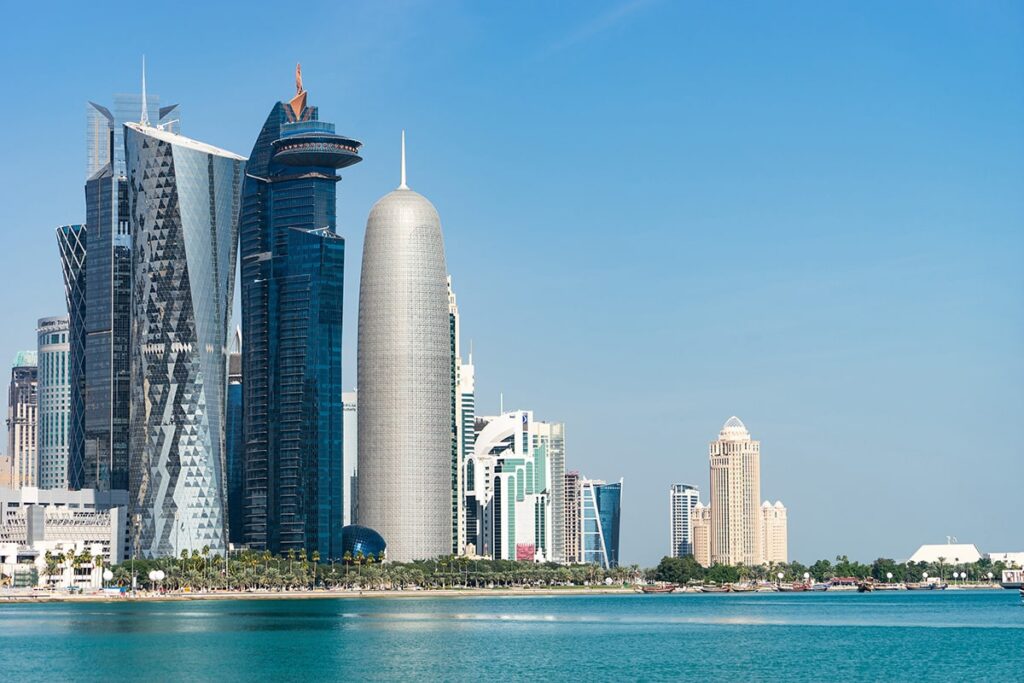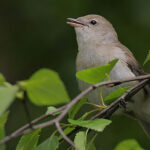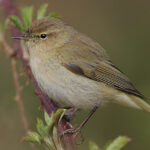1. Wealth: Qatar is considered one of the richest countries in the world, mainly due to its abundant oil resources that have created two huge industries; energy (oil and natural gas) and construction
2. Foreign labor: The large industries attract huge amounts of foreign labor, so that today there are more than 180 different nationalities, even though there are only about 2 million people living in Qatar. Only about 10% of Qatar’s population was born in the country
3. Gender distribution: 69.5% of the population is 25 – 54 years old. This age group consists of 1,170,547 men and 248,369 women. The gender imbalance is again related to the foreign workforce, as the majority of foreign workers are male and industrial sectors are generally male-dominated. Incapacitated men (elderly, sick, criminals, etc.) are usually sent back to their respective home countries
4. Population growth: The population growth in Qatar is special: 1950 = 25,000, 1970 = 47,000, 2000 = 591,000, 2005 = 906,000, 2013 = 2,000,000. The high population growth is, of course, also due to the influx of foreign workers. In percentage terms, the growth was highest in the years 2005 – 2009, where it was 13% – 21%
5. Steering: Qatar has been ruled by the Al Thani family since the mid-1800s and the current Emir, Hamad Bin Kalifa Al Thani, has been in power since 1995, taking over from his father in a peaceful coup
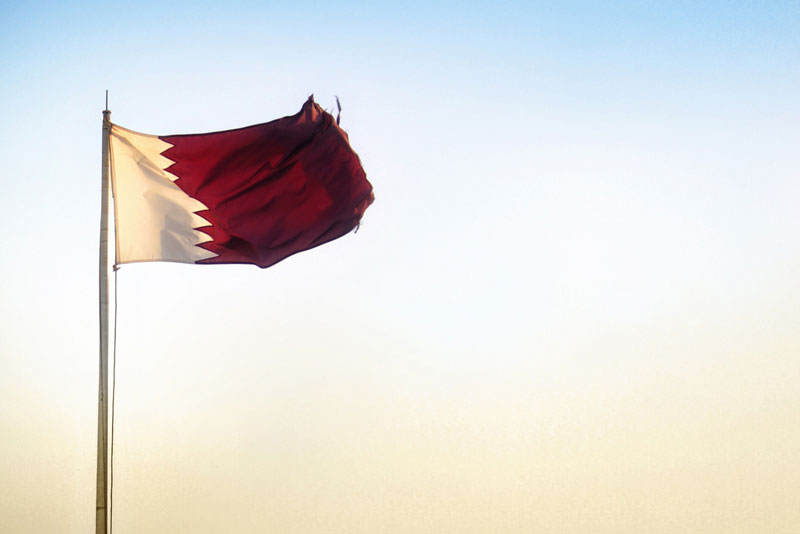
Fact: Qatar’s flag was originally white and red, but the flag manufacturer used a “test color” for the flag. When the flag was raised, the color turned out to be more of a maroon. The decision was made to keep the color, which was later dubbed ‘Qatar red’
6. Age: In Qatar, there are at least 33 people who are over 100 years old. Qatar is also one of the few countries in the world where men have a longer average lifespan than women
7. Ghutra: The men of Qatar wear a distinctive headdress called a ‘ghutra’, which comes in many different colors, each with a special meaning; white means ‘purity’ and red symbolizes ‘patriotism’. A black and white shows ‘freedom’. There are also other colors that don’t necessarily have a symbolic meaning
8. Aspire Academy : With an impressive 290,000 m2, the Aspire Academy sports hall is the largest in the world. It includes a football pitch, a 200 meter running track, an Olympic swimming pool (50 m in length), a diving pool, a gymnastics hall, a sports hall, 13 table tennis tables, fencing courts, squash courts and space for contact sports.
9. Torch-Doha: The tallest tower is the Torch-Doha hotel, which with its 51 floors is 300 m high
10. WORLD CUP 2022: Qatar will host the World Cup in 2022, which means that a lot of work is already being done to improve the country’s infrastructure, as well as building new hotels, homes, shops, etc.
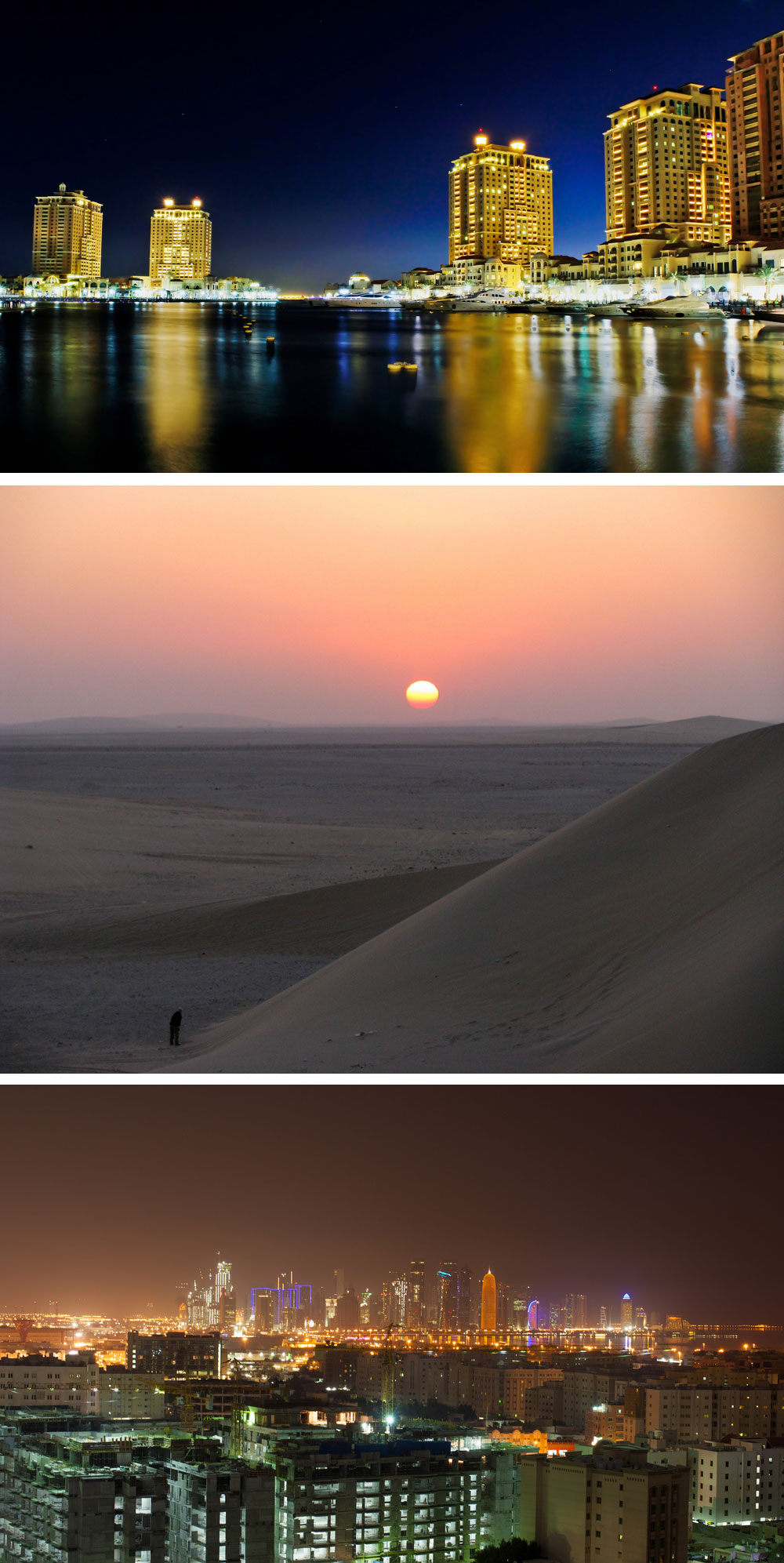
Qatar’s distinctive tall skyscrapers stand in stark contrast to the country’s vast, barren desert

